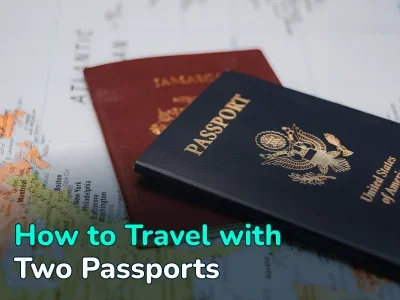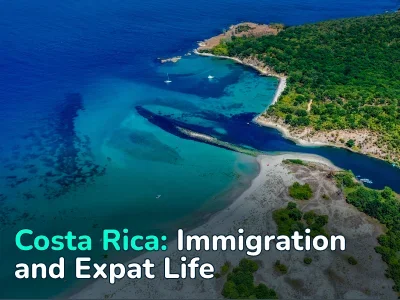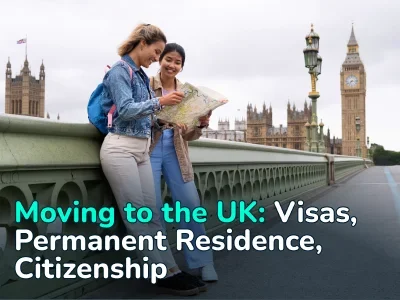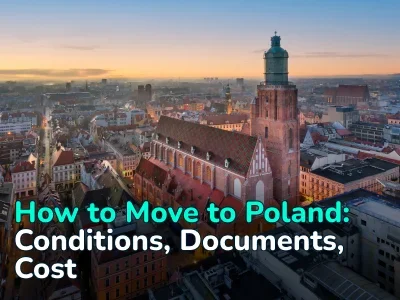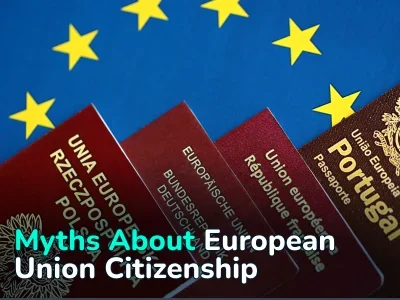
How to Apply for Canadian Permanent Residence
A Permanent Residence (PR) permit in Canada grants foreign nationals resident status, providing them with most of the rights and opportunities available to local citizens. The eligibility for this status depends on various immigration programs, such as the Express Entry system for skilled workers, family sponsorship, refugee protection, and provincial nominee programs (PNPs).
However, individuals with this status cannot vote or hold key government positions, but these restrictions can be lifted by obtaining Canadian citizenship after three years of residence in the country, or 1095 days within the last five years.
Canadian Permanent Resident Benefits
Canada is classified as a developed country, which implies a relatively stable economy with low unemployment. Permanent residents have access to high-quality healthcare and education, as well as social benefits such as subsidies and financial assistance.
Сanadian permanent resident benefits:
- Right to live and work permanently. Permanent residents can live, work, and study in any province or territory in Canada, whereas work visas typically tie an individual to a specific employer and location.
- Education for children and adults. The Canadian government provides free schooling for children under 18 and offers more affordable tuition for university and college education compared to international student rates.
- Family sponsorship. A permanent resident can sponsor their relatives (spouse, children, parents) for permanent residence in Canada.
- Protection from deportation. Permanent residents can only be deported in cases of serious legal violations.
- Accessibility for foreign nationals. Canada is a highly multicultural society, and the government actively encourages immigration without imposing additional restrictions.
Disadvantages:
- Minimum residency requirement. To maintain permanent resident status, an individual must spend at least 730 days (2 years) in Canada within a 5-year period.
- Limited civil rights. Permanent residents cannot vote in federal, provincial, or municipal elections and are ineligible for high-ranking positions in key government structures (such as the military, police, intelligence services, and some government-owned enterprises).
- Job market challenges. Before moving to Canada, it is important to consider that many local employers prefer candidates with Canadian work experience. Professionals such as doctors, engineers, lawyers, and accountants must undergo local certification to validate their qualifications.
- Bureaucratic delays. Local bureaucracy is slow and complex — obtaining Сanada permanent residence can take anywhere from 6 months to 2–3 years, while acquiring citizenship requires an additional 3 years of residency.
- Integration difficulties. Canadians are polite but reserved, which can lead to feelings of isolation for new immigrants in the first few years. The situation is even more challenging for those who lack proficiency in English or French, as this can create barriers to employment and social interactions. On average, full adaptation takes between 1 to 3 years.
Canada Permanent Residence Requirements
You can immigrate to Canada for permanent residency (PR) through various immigration programs, each with different requirements. For example, financial immigration requires proof of a minimum income level or a deposit. However, there are also common criteria that apply to all programs.
Сanada permanent residence requirements:
|
Criteria |
Сonditions for permanent residency in Сanada |
|
Age |
Preference given to applicants aged 18–45. |
|
Education |
Minimum requirement: secondary or higher education, with diploma assessment via ECA (Educational Credential Assessment). |
|
Work Experience |
Preferred: At least 1 year of work experience in an in-demand occupation within the last 10 years. |
|
Language Proficiency |
Must be confirmed via IELTS, CELPIP (English) or TEF, TCF (French) language tests. |
|
Financial Stability |
The applicant must prove they have sufficient funds for relocation and settlement in Canada. |
|
Criminal Record |
A police clearance certificate from the applicant’s country of residence is required. |
|
Health Condition |
A medical examination is required to confirm the absence of communicable diseases. |
How to Get Canadian Permanent Residence
Immigration programs in Canada are divided into federal and provincial categories. The key distinction of provincial programs is that individual provinces select candidates who meet their specific economic and labor market needs. If a candidate is approved after an interview, they receive a work permit, but it is restricted to the offered position and the province where the employer is located.
Express Entry Program
The Express Entry system helps skilled workers get Canada permanent resident status. It operates on a points-based system, where candidates are evaluated based on factors such as age, work experience, education, and language proficiency. Participation in the program does not require a job offer, although having one can add up to 200 points to the overall profile score.
Canada permanent residence through express entry open to:
- Skilled professionals with a higher education degree and at least one year of work experience in their field.
- Trades workers (e.g., construction, manufacturing, electrical work, etc.).
- Candidates with Canadian work experience gained through a work visa.
- Applicants nominated through Provincial Nominee Programs (PNPs).
Key to becoming a Canadian permanent resident:
- Score at least 67 out of 100 points in the Federal Skilled Worker Program selection system.
- Demonstrate proficiency in English or French by passing one of the approved language tests (IELTS, CELPIP, TEF, or TCF).
- Have their diploma assessed through the Educational Credential Assessment (ECA).
- Prove at least one year of relevant work experience in an in-demand occupation in Canada within the last 10 years.
- Show financial proof of at least CAD 13,757 ($9,700) for a single applicant, with higher amounts required for families.
- Pass a medical examination and a criminal background check
Provincial Nominee Program
Each Canadian province has the authority to nominate candidates through its own Provincial Nominee Program (PNP). The selection process is directly based on the province’s current labor market needs and demand for specific occupations.
Key requirements:
- At least one year of work experience in an occupation that is in demand within the province’s economy.
- Language proficiency (proof of English or French skills).
- Educational Credential Assessment (ECA) to verify foreign diplomas.
- Proof of sufficient financial resources for relocation and settlement (varies by province).
- Some provinces require applicants to already be living, studying, or working there. In fewer cases, a job offer may be necessary.
Popular provincial nominee programs:
- Ontario Immigrant Nominee Program (OINP) — Prioritizes IT specialists, financial professionals, and engineers.
- British Columbia Provincial Nominee Program (BC PNP) & Nova Scotia Nominee Program (NSNP) — High demand for healthcare workers, tech professionals, and construction workers.
- Alberta Advantage Immigration Program (AAIP) — Suitable for candidates with experience in oil & gas, agriculture, and construction.
- Manitoba Provincial Nominee Program (MPNP), Saskatchewan Immigrant Nominee Program (SINP), & Prince Edward Island Provincial Nominee Program (PEI PNP) — Focus on agriculture and food production industries.
The easiest way to get permanent residency in Canada is through the Saskatchewan Immigrant Nominee Program (SINP) and the Manitoba Provincial Nominee Program (MPNP), which are among the most accessible pathways to Canadian PR:
- SINP has one of the lowest Express Entry score requirements (65-68 points) and does not require a job offer to apply.
- MPNP is more lenient toward candidates with relatives or even friends in Manitoba. However, without these connections, a job offer is mandatory to immigrate through MPNP.

Business Immigration
Canada grants permanent residency to entrepreneurs, investors, and business owners who are willing to contribute to the country’s economy. The main Canada business PR requirements vary by program, but they generally include sufficient capital, management experience, and a viable business plan.
However, the government protects the economy from those seeking only tax advantages by requiring applicants to create jobs for local residents and conduct business operations within Canada.
Canada offers two main federal programs for business immigration:
- Start-Up visa program. Canada business immigration program that is designed for entrepreneurs who want to launch an innovative startup in Canada with support from designated investors or business incubators.
- Self-employed persons program. For self-employed individuals with experience in cultural, artistic, or athletic fields who can make a significant contribution to Canadian society.
In addition to federal options, each province runs its own business immigration programs under the Provincial Nominee Program (PNP). These streams are aimed at investors and entrepreneurs who are willing to invest in local businesses and help develop regional economies.
Family Class Sponsorship
Сanadian immigration family sponsorship is one of the fastest pathways to Canadian permanent residency. It allows permanent residents to sponsor their relatives, covering their living expenses, including education, healthcare, and utility costs.
Who can be sponsored?
- Spouse (including common-law partners) under the Canadian sponsorship spouse program. The relationship must have been legally registered for at least one year before sponsorship.
- Parents and grandparents. Permanent residence for parents in Canada is possible if sponsors prove that they have sufficient financial resources to support them.
- Children (including adopted children). The child must be under 22 years old and unmarried.
- Siblings, nieces, nephews, and grandchildren. Sponsorship is allowed only if they are fully dependent on the sponsor and have no surviving parents.
Marrying a Canadian permanent resident does not automatically grant permanent residency to the spouse. The partner must go through the entire sponsorship process to obtain PR.
Before immigrating to Canada, the sponsored relative must:
- Pass a medical examination to confirm they have no serious health conditions.
- Provide a police clearance certificate proving they have no criminal record.
- Express a genuine willingness to relocate and live with the sponsor. If immigration officials suspect coercion, the application may be rejected.
Сanada family PR sponsor requirements:
- Must be at least 18 years old.
- Must reside in Canada.
- Must sign a financial support agreement for the sponsored person:
- Spouse: 3 years
- Child: 10 years or until the child turns 22
- Parents: 20 years
- Must have no outstanding debts to the government, no criminal record for violent offenses, and no history of violating previous sponsorship commitments.

PR in Canada Through Investment
At the federal level, there are no investment-based immigration programs for obtaining permanent residency directly. However, several provinces offer investment pathways under their Provincial Nominee Programs (PNPs).
Provinces can invite investors if they are willing to invest between CAD 500,000 and CAD 600,000 ($352,410—$422,900) into the local economy or a specific project. Additionally, applicants must have at least three years of experience in business ownership or management.
Сanada permanent residence by investment isn’t possible. Investors must first apply for temporary resident status. Only after meeting residency duration requirements and fulfilling investment conditions can they transition to permanent resident (PR) status.
PR for Refugees in Canada
Canada grants refugee status to individuals who fear persecution based on race, religion, nationality, political opinion, or membership in a particular social group. Those classified as humanitarian refugees are individuals who fear returning to their home country due to risks of torture, threats to life, or inhumane treatment.
PR for refugees in Canada claim process:
- Submitting an application for permanent residence in Сanada. A refugee claim can be submitted upon arrival at a border crossing, airport, or seaport. A Canada Border Services Agency (CBSA) officer will conduct an interview and decide whether to refer the case to the Immigration and Refugee Board of Canada (IRB). In other cases, applications are filed through an Immigration, Refugees, and Citizenship Canada (IRCC) office.
- Application review. If the claim is accepted for processing, the applicant will receive a hearing date, where they must present evidence proving a genuine risk to their safety.
- Receiving refugee status. If the IRB rules in favor of the applicant, they will be granted refugee status in Canada.
- Applying for permanent residency. Once refugee status is obtained, the individual can apply for permanent residence (PR) through IRCC and wait for a decision on their application.
Canada PR Process for Students
A permanent residence for international students in Canada is one of the longest pathways to obtaining permanent residency (PR). The process begins with selecting a school and program of study. The institution must have Designated Learning Institution (DLI) status. Without this designation, graduates cannot apply for a Post-Graduation Work Permit (PGWP), which is essential for gaining work experience in Canada. The study program must be at least 8 months long, but a 2-year program is preferable as it increases eligibility for longer work permits.
Steps to the Сanada PR process for students:
- Obtaining a post-graduation work permit (PGWP). This permit is issued for a period equal to the length of the completed study program (up to a maximum of 3 years). The application must be submitted within 180 days after graduation.
- Gaining Canadian work experience. To qualify for permanent residency through programs like the Canadian Experience Class (CEC), graduates need to complete at least 1 year (1,560 hours) of work experience in Canada. Full-time employment counts toward this requirement, and part-time work can also be considered if the required hours are accumulated. Only jobs classified under NOC skill levels 0, A, or B are eligible for PR applications.
- Applying for permanent residency. After 2 to 4 years (study + work), applicants are eligible for getting PR in Canada as a student. The application is typically submitted through Express Entry under the Canadian Experience Class stream. University graduates need to score at least CLB 7 (Canadian Language Benchmark), and college graduates need CLB 5.
Obtaining a residence permit through employment
Canada PR with work permit is one of the most effective routes to obtaining permanent residency, particularly for candidates who already have Canadian work experience. If a candidate does not have prior Canadian work experience, they must first find a Canadian employer willing to hire them from abroad. The employer must apply for a Labour Market Impact Assessment (LMIA), proving that no suitable local candidates are available for the position.
Once the LMIA is approved, the employer can issue a formal job offer. The candidate then submits an application through Immigration, Refugees, and Citizenship Canada (IRCC) to obtain temporary residency, which allows them to work only for that specific employer.
To qualify for a Canadian permanent resident work permit via the Canadian Experience Class (CEC) program, the worker must accumulate at least 1 year (1,560 hours) of experience in a job classified under NOC skill levels 0, A, or B.
After meeting the experience and language criteria (CLB 7 for NOC 0 and A and CLB 5 for NOC B), the candidate can apply for PR through Express Entry under the CEC stream.
Each province has its own nominee programs that select candidates based on their Express Entry score or direct provincial applications. If an applicant meets the province’s labor market needs and agrees to settle there, they may receive PR status immediately.
How to Apply for Canadian Permanent Residence
Before submitting an application, the first step is to ensure eligibility. Diplomas obtained outside Canada (unless from recognized international institutions) must be verified through an accredited organization such as WES, ICAS, or IQAS. All applicants must take a language test—IELTS for English or TEF for French—and achieve at least CLB 4, regardless of the immigration program.
List of documents required for Canada PR:
- Proof of work experience. Employer reference letters, job contracts, and employment certificates.
- Proof of financial stability. Bank statements confirming sufficient funds for settlement in Canada.
- Medical examination. A health check-up at a Canada-approved medical center.
- Police clearance certificate. A document proving the absence of a criminal record in the applicant’s country of residence.
Once all requirements are met, the applicant must create an online profile on the Immigration, Refugees, and Citizenship Canada (IRCC) website. The system will request personal information and digital copies of documents. The profile is then placed into the Express Entry Pool, where it is evaluated using the Comprehensive Ranking System (CRS), and points are assigned accordingly.
If an employer is interested in the candidate, they will receive an Invitation to Apply (ITA) via their online account. This ITA serves as a formal invitation to apply for permanent residency.
Applicants can also apply directly through provincial nomination programs without creating an Express Entry profile. However, registering in Express Entry adds an extra 600 CRS points, significantly improving the chances of receiving an ITA.
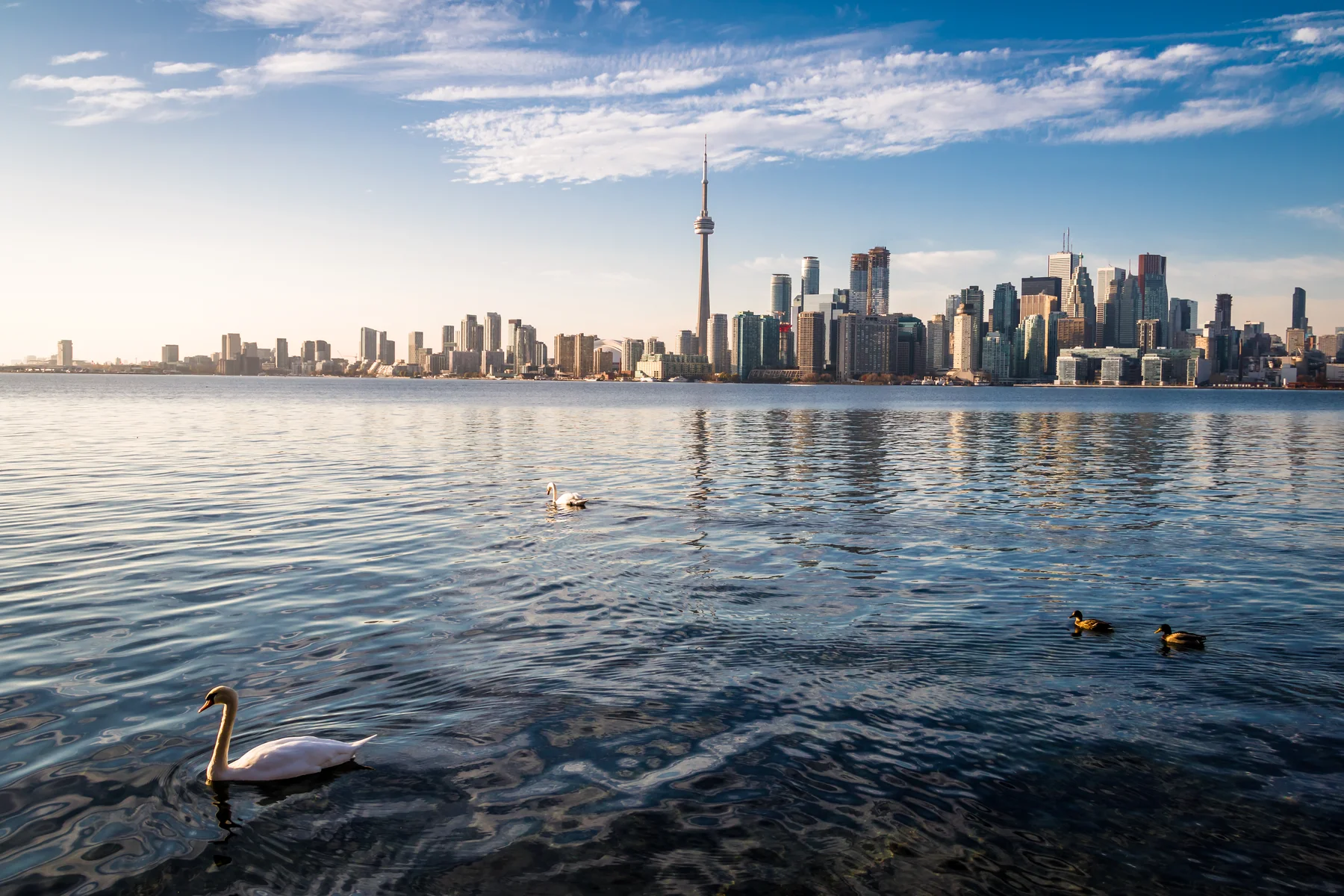
Permanent Residence Card Renewal
Canada permanent residence card serves as proof of PR status. It allows permanent residents to re-enter Canada without restrictions after traveling abroad. It is typically valid for five years, though in some cases, it may be issued for only one year. The only requirement for renewal is meeting the residency obligation—the applicant must have physically resided in Canada for at least 730 days (2 years) within the last 5 years.
Only permanent residents who are physically in Canada at the time of application can renew their PR card. Canadian citizens and individuals under a removal order are not eligible for renewal.
How to apply for renewal of Canadian permanent resident card:
1. Gather the required documents
- Completed IMM 5444 form (Application for a Permanent Resident Card).
- Two identical color photographs meeting IRCC photo specifications.
- A copy of a valid passport or travel document.
- A copy of the current or expired PR card (if applicable).
- Proof of meeting the residency requirement, such as:
- Tax returns,
- Utility bills,
- Employment contracts or pay stubs.
2. Pay the processing fee
- The current fee is 50 CAD ($35), payable online via the official IRCC website.
3. Submit the application
- The completed application package must be mailed to the IRCC Case Processing Centre in Sydney, Nova Scotia.
If a renewal applicant needs to leave the country before receiving the new Canadian permanent residence card, they must apply for a Permanent Resident Travel Document (PRTD). It is issued by a Canadian visa office abroad and allows permanent residents to re-enter Canada without a PR card.
Obtaining Canadian Citizenship
Canadian PR and citizenship are closely bound to each other. A permanent resident can apply for Canadian citizenship if they have lived in Canada for at least 1,095 days (3 years) within the last 5 years. The residency days are counted up to the date of application submission, not the date of processing.
Additionally, applicants must prove tax compliance by submitting tax returns showing that they have paid taxes in Canada during this period.
After that, they must:
- Take a language test again.
- Pass the Canadian citizenship test, which covers history, values, institutions, symbols, rights, and responsibilities of Canadian citizens.
If the applicant meets all requirements, they must wait for a decision. On average, the processing time is around 12 months, but in larger cities, it can take up to 23 months.
Frequently Asked Questions About Getting a Canadian Residency
Is permanent residence the same as citizenship?
Can Canadian permanent residence be revoked?
Can a permanent resident leave Canada?
How long is Canadian permanent residence valid?
What is the easiest way to immigrate to Canada?
What is the best age to immigrate to Canada?
How long does the PR process take?
How much money do you need to immigrate to Canada?
Author
I write informative articles about real estate, investments, job opportunities, taxes, etc.














